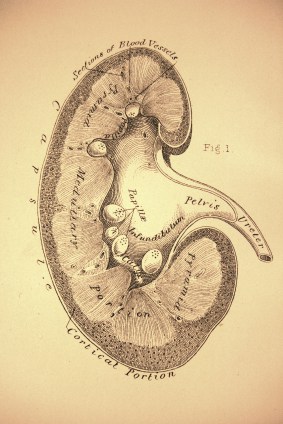What happens when Good Samaritan donors and a new high-tech computer algorithm get together in a breakthrough kidney matching program? Hundreds more lives can be saved in the ultimate pay-it-forward plan.
A Good Samaritan donor is someone who donates a kidney to a stranger; perhaps because he or she wants to help someone they know, but that person is not a compatible match. When many donors and recipients participate in a series of transplant operations called a “donation chain,” many more people receive new kidneys and the compatibility level of those matches improves too.
The largest kidney swap in the world was profiled recently in a front-page story in The New York Times. Known as Chain 124, an amazing 60 kidney operations were performed and 30 lives were saved in a series of transplants made possible by the National Kidney Registry, the world’s leading organization for kidney exchanges.
There are many heartfelt stories of altruism in Chain 124. One story is the participation of two people who were already a compatible match for each other as a stand-alone pair. By delaying their surgeries and entering the registry pool, not only did the recipient find a more compatible match, but also 11 more lives were saved because the donor’s participation created an additional sequence in the chain. Compatibility is an important consideration, because the higher the compatibility match, the longer a donated kidney will last.
The power of numbers
Since the record-breaking success of Chain 124 however, the future is even brighter. A new computer algorithm called SMELAC is finding significantly more matches for life-saving kidney transplants than ever before, boosting matches 29-167% beyond the previous computer program. SMELAC stands for Simultaneous Mutually Exclusive Loops and Chains.
Joe Sinacore, Director of Research and Education with the National Kidney Registry, says, “Now with SMELAC, we are able to simultaneously search for the best options of exchanges. The computer can objectively pick the best option, which is the maximum number of transplants for the most patients while getting the hardest-to-match people transplanted.”
Economist Alvin Roth from Harvard University, one of the key contributors to the algorithm breakthrough, says, “It’s natural that kidney exchange programs look to computerized algorithms to find the best exchanges and chains because algorithms can allocate and reallocate scarce resources.” The SMELAC algorithm identifies the virtual matches and then it is up to the hospitals to accept the matches, exchange blood samples and then schedule and execute surgery dates. There are currently 60 hospitals across the U.S. participating in the National Kidney Registry and the goal is to reach 100.
Kidneys perform an important job because every day they filter and return about 200 quarts of fluid to our bloodstream, leaving about two quarts to be excreted as urine. The leading cause of chronic kidney disease is diabetes, but it can also be caused by high blood pressure or an inherited genetic abnormality. Right now, there are almost 400,000 Americans on dialysis, an onerous, yet necessary process that cleans the blood using an external machine, taking up to four hours, three times a week. There are more than 91,000 Americans waiting for a new kidney right now.
The National Kidney Registry facilitated a total of 21 transplants in 2008, 175 in 2011 and now with SMELAC, the goal is to hit 250-300 in 2012. The first kidney swap arranged by the National Kidney Registry happened on Valentine’s Day in 2008. “There was a 5-year-old boy in that swap and we still get emails from the mom telling us how well he is doing,” says Joe Sinacore.
While Chain 124 was truly remarkable and it’s possible that an even longer chain could occur in the future, Joe Sinacore says, “Getting more people transplanted is paramount to the number of people in one chain.”
CONNECT THE DOTS
To learn more about kidney donation chains, visit the National Kidney Registry. Read their Living Donors page to find out more about different types of kidney donations, donor risks, wait times and a list of participating hospitals. The National Kidney Foundation provides patient education and support for potential donors and healthcare providers. You may also like our earlier posts, “Avoiding Kidney Disease and Its Complications” and “Incompatible Kidney Transplants.”


